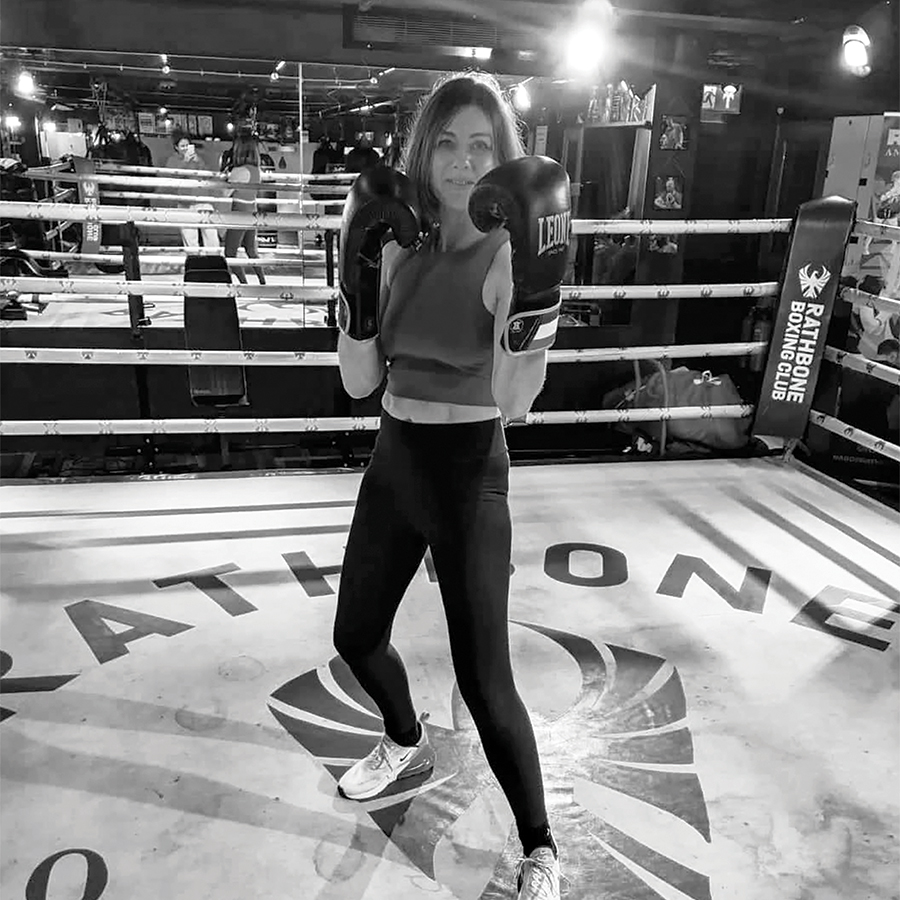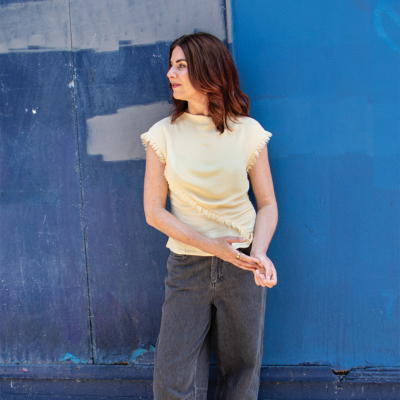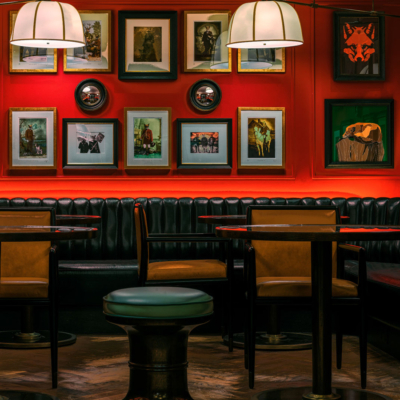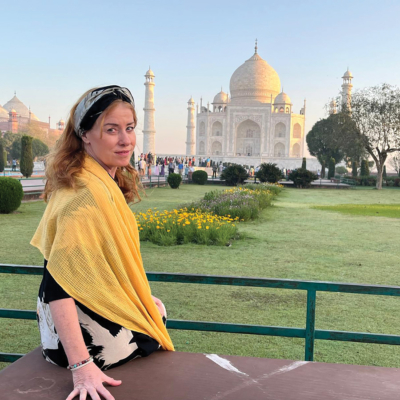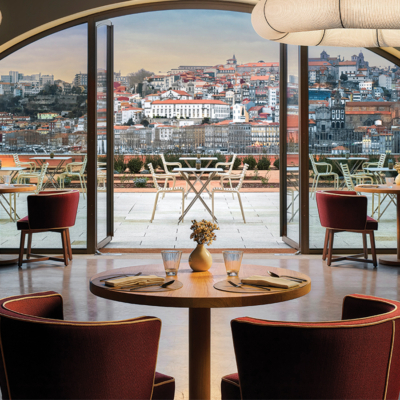Time to turn our focus to strength training …
Up to a decade ago, I spent my adult life entirely focused on being very thin, with zero consideration of how to be strong. This was silly, if very in keeping with the times in which I lived, and the generation which forged me. I am Gen X, one of the don’t-you-dare-try-too-hard girls, who aspired toward heroin chic-grade slenderness, a body achieved by smoking, dancing all night and burning the candle at both ends – not with exercise and decent nutrition.
Five foot six inches tall and somewhere between a UK dress size 6 and 8, I didn’t eat very much, ever. I didn’t have an eating disorder. I just liked being skinny and had worked out how to maintain a relatively low body weight. My periods didn’t stop; my immune system was robust. I wasn’t miserable. In fact, I was rather happy. From a musculoskeletal perspective, however, it turned out, this sort of skinniness was completely unsustainable. As I hit my late 30s, my body began to express its profound displeasure with me. Because, although society might place a whole world of pressure on women to be thin, our bodies want something quite different from us, especially as we get older.
The first I knew was the sudden, outrageously unwelcome onset of repeated lower back issues. It happened once, then again, then again! I’d do something incredibly minor: trip over a paving stone, get out of bed too quickly … and bam! I would find myself rudely immobilised for 48 hours. I assumed it was a consequence of stress, a journalist’s life lived on deadline, half slumped over a laptop, combined with those massive, overstuffed trophy handbags we were in the habit of carting about with us in the mid-2000s (mine a Mulberry Bayswater) – and it was, partly. But it was mostly down to the fact that women start losing muscle mass at the age of 30. It’s called sarcopenia. I first encountered it as an idea while researching my book on women’s bodies, though heaven knows, I’d encountered it as a reality some years earlier.
“My tiny body was getting worse and worse at being able to support me.”
Women’s bodies – all of them, not just the foolishly thin ones – require very specific, and very purposeful handling where exercise is concerned, particularly as they age. They’re subject to intense, constantly changing hormonal load, from puberty, at every point in the menstrual cycle, into perimenopause, menopause and post-menopause. Sarcopenia, in combination with the demands of those fluctuating hormones, means we need to constantly adjust how we eat and train to avoid injury.
Obviously, I wasn’t doing any of the training which might have helped slow its progression, though even if I had been, I wasn’t taking in near the amount of protein required to rebuild muscle. And so, my fashionably tiny body was getting worse and worse at supporting me in basic day-to-day movement.
I first met physiotherapist Tom Bradley a decade ago when I went to him for help with that pesky, mysterious back issue. He took one look, told me to go away, put some weight and muscle on, see if that helped. Which I did – and guess what? It really did. Bradley explained how the tailing-off of sex hormones oestrogen and progesterone in perimenopause means women begin to lose yet more muscle fibre. This happens in men, too, Bradley said, just much more slowly. Bone density also tends to drop off in perimenopause. Bones are built like honeycomb: when oestrogen drops away, the holes in that honeycomb become bigger, meaning your bones become more brittle. As menopause hits and oestrogen levels drop further still, those bones become even more brittle.
Women’s bodies can become more insulin-resistant in menopause, which means we can, often do, put on weight, which either makes us less physically active, which makes everything worse, or makes us go on crazy crash diets, which means we have less potential to create muscle and our panicked bodies produce more of the stress hormone cortisol, which encourages our body to store emergency fat around our waists.
Then, there’s our mitochondria – kind of individual factories within each of our muscle cells, charged with producing energy. Mitochondria have oestrogen receptors, so are sensitive to its falling levels, leaving them less effective at breaking down and producing the chemicals required to form muscle contractions. “Which means you feel – and are – less strong,” according to Tom Bradley. All of which sounds miserable, a slip-slide into painful, unalluring decline. Except there is something you can do, something women must do, to alleviate it. It happens to be the thing formerly skinny me took up, and I am so glad I did.
“Strength training is, according … pretty much every expert working in the arena of women’s health, the single most important, most effective thing women can do to prep our bodies for, and take us through, the ageing process.”
Strength training is, according to Bradley, and also pretty much every expert working in the arena of women’s health, the single most important, most effective thing women can do to prep our bodies for, and take us through, the ageing process. Also called “weight training”, or “resistance training”, it’s achieved through the lifting of additional weight, in the form of dumbbells, barbells, kettle bells, weighted vests for the dog walk. It’s one of the most brilliant things I have ever done with my body. Bigger, stronger muscles mean enduring mobility – independence-enabling, longevity-supporting – into our 60s, 70s, 80s, 90s. Bigger muscles mean our bones are protected, defended against breaking. And they mean we look hench, babe! I mix two sessions of weight training a week with Pilates and a (wonderful) boxing class.
I’ve gone up a dress size in muscle alone and I tell you what: as much as I thought I loved being super-skinny, I love being muscular ten times more! A hundred times more! I love that my body feels like this coiled spring of potential. I love how bouncy and competent it is, how no-longer-fragile. I really love that I haven’t had back pain in years.
Just start! Please? For me? Ignore that terrifying Instagram woman currently insisting you’ll die in a year if you can’t deadlift one and a half times your own body weight, get a couple of girlie pink one-kilo weights from Amazon and try? Because you might just amaze yourself. I know I have.
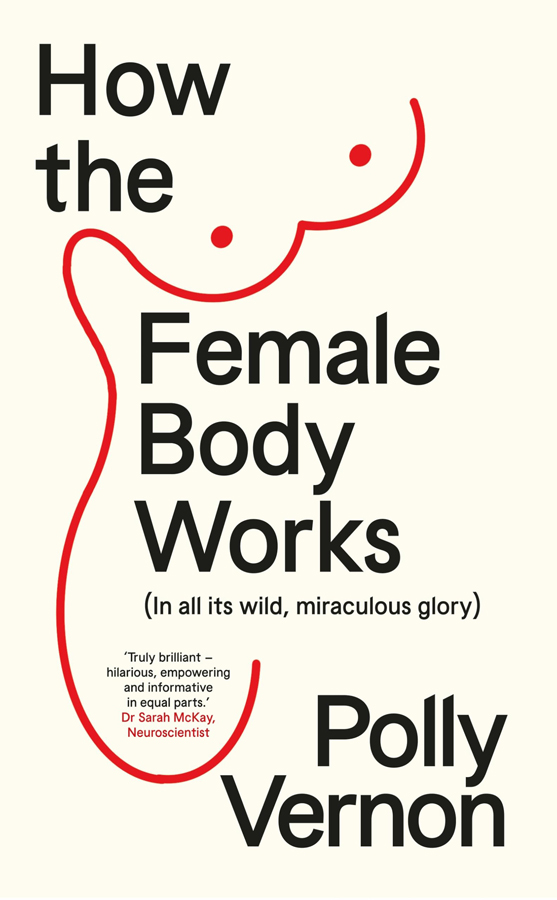
How The Female Body Works (New River) is out now.
We may earn a commission if you buy through affiliate links on our site.





